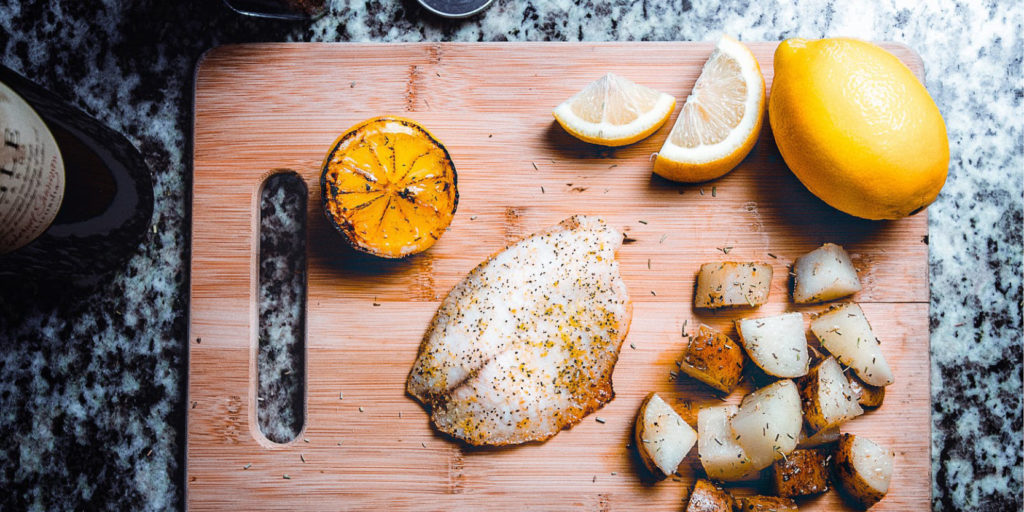
SUSTAINABLE FISH WEEK
We only buy wild fish and never farmed. We always buy lesser known species when available and never imported fish. We work with our fishmongers to ensure that the boats that bring the fish to market are using sustainable fishing methods such as Pots, Gill-nets, line-caught, etc. and are fully traceable. We avoid all fish that is not in season.
Fish in captivity must be fed. Some species are herbivores or omnivores; species like shrimp and salmon are carnivorous and must be fed on other fish. According to Time magazine, “It takes a lot of input, in the form of other, lesser fish—also known as ‘reduction’ or ‘trash’ fish—to produce the kind of fish we prefer to eat directly. To create 1 kg (2.2 lbs.) of high-protein fishmeal, which is fed to farmed fish (along with fish oil, which also comes from other fish), it takes 4.5 kg (10 lbs.) of smaller pelagic, or open-ocean, fish.” In an article on bluefin tuna farming published in the San Francisco Chronicle, a seafood wholesaler estimated that it takes 26 pounds of feed to produce 1 pound of bluefin tuna; the feed consists of squid, blue mackerel, and sand eel. A staggering 37% of all global seafood is now ground into feed, up from 7.7% in 1948, according to recent research from the UBC Fisheries Centre. Some goes to fish farms and some feeds pigs and poultry. Both are examples of what Francis Moore Lappe called “reverse protein factories,” where the resources far outweigh the product.
ENVIRONMENTAL IMPACT
Coastal areas worldwide have seen habitat and ecosystem alterations in order to accommodate fish farms. Mangrove forests–complex ecosystems that lined great stretches of the coasts of Thailand, Vietnam, and China, as well as those of other countries—have been destroyed to create shrimp and fish farms (as well as other businesses). These swamps helped buffer the the effects of hurricanes, cyclones, and tsunamis; it is believed that the loss of coastal wetlands along the Mississippi Delta contributed to the immense devastation from Hurricane Katrina. Other agricultural areas were also affected. The World Resources Institute estimates that “nearly half the land now used for shrimp ponds in Thailand was formerly used for rice paddies; in addition, water diversion for shrimp ponds has lowered groundwater levels noticeably in some coastal areas.”
Pests such as sea lice (tiny crustaceans that prey on fish) proliferate in fish farms and spread out to afflict wild fish. Sea lice are especially damaging to salmon, sometimes eating away the flesh of their heads down to the bone. A fish farm on Loch Ewe on the Western Scottish coast is blamed for damaging Scotland’s wild salmon stocks. Viral, fungal, and bacterial diseases that arise in fish farms have spread to native fish populations. Individual fish, often of non-native species, escape from fish farms to compete with native fish for food and habitat resources.
Agencies worldwide have called for better management of fish farms, strict enforcement of regulations to protect consumers, more research on sustainable practices, and sharing of information on sound aquacultural practices. International, regional, and local agencies are all involved in the effort, as are agencies concerned with animal welfare, the environment, and food resource management. Responsible, sustainable fish farming is an achievable goal and one that will become an increasingly important part of stewardship of the Earth’s water resources.
